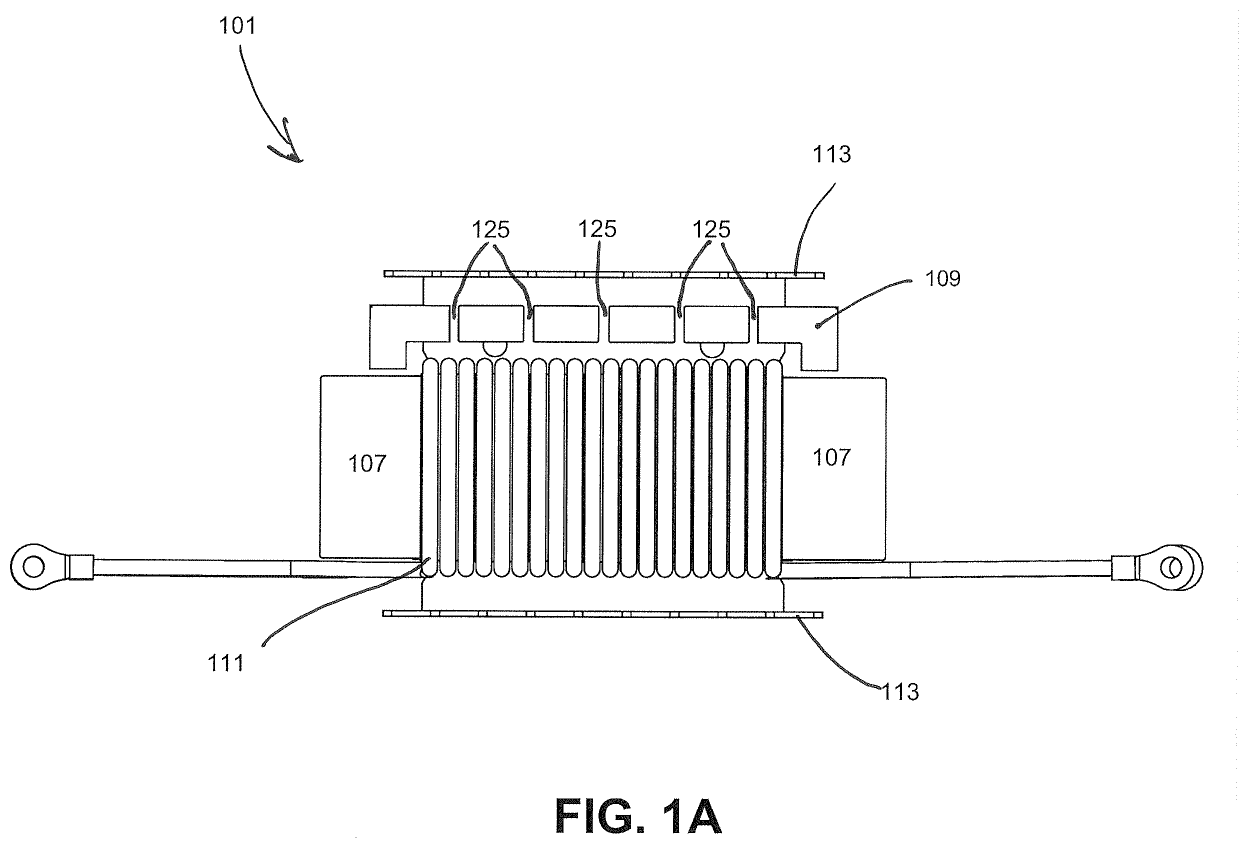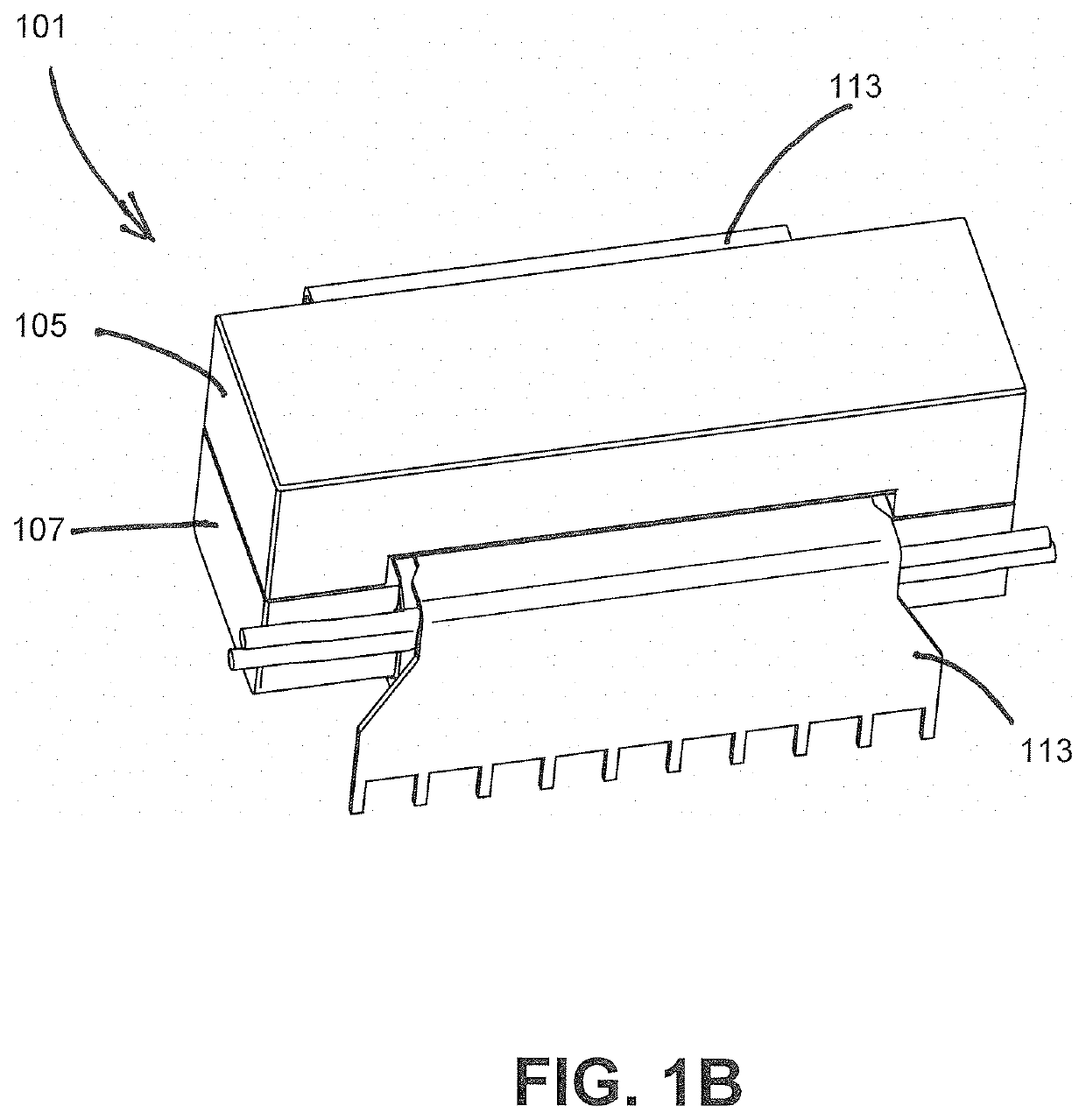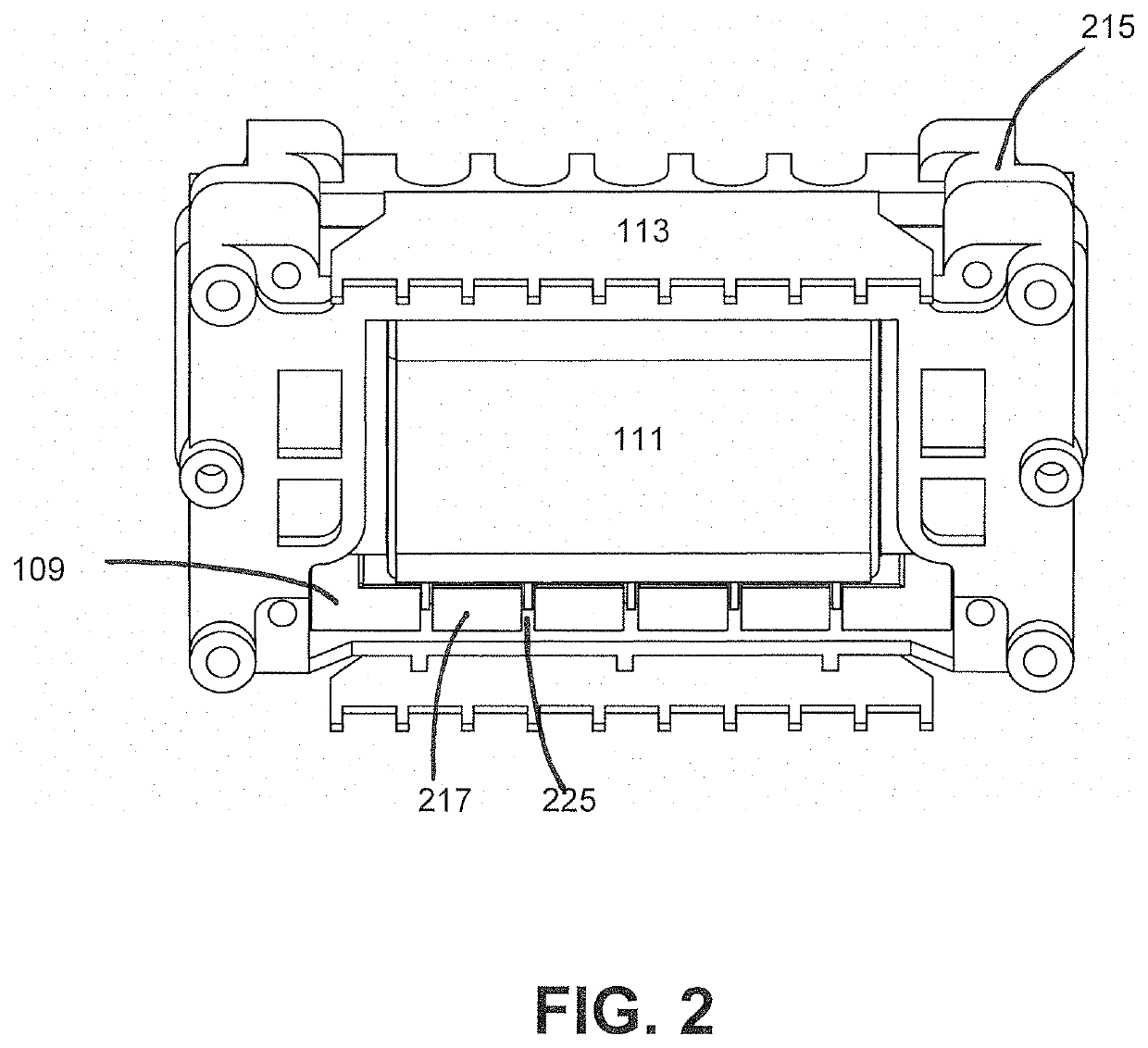Integrated transformer with low ac losses and impedance balanced interface
- Summary
- Abstract
- Description
- Claims
- Application Information
AI Technical Summary
Benefits of technology
Problems solved by technology
Method used
Image
Examples
Embodiment Construction
[0026]An exemplary embodiment is described herein with reference to the system depicted in FIGS. 1A and 1B. The transformer 101 includes a core formed of three sections: top core 105, bottom core 107 and shunt core 109, with shunt core 109 containing an array of distributed gaps 125.
[0027]In an embodiment, transformer 101 may be a 7 kW rated transformer. However, it should be noted that transformer 101 may be rated for any other suitable high-current or high-power transformers. For example, high current may be in the tens of amperes to thousands of amperes, or any other suitable amount. In a further example, high power may be in the hundreds of watts to hundreds of thousands of watts.
[0028]In accordance with an embodiment, shunt core 109 may be formed of a low-permeability magnetic material, such as powdered metal. However, the shunt core 109 may also be formed as a segmented core of a higher-permeability material like ferrite. The choice of shunt core material will depend on variou...
PUM
 Login to View More
Login to View More Abstract
Description
Claims
Application Information
 Login to View More
Login to View More - R&D
- Intellectual Property
- Life Sciences
- Materials
- Tech Scout
- Unparalleled Data Quality
- Higher Quality Content
- 60% Fewer Hallucinations
Browse by: Latest US Patents, China's latest patents, Technical Efficacy Thesaurus, Application Domain, Technology Topic, Popular Technical Reports.
© 2025 PatSnap. All rights reserved.Legal|Privacy policy|Modern Slavery Act Transparency Statement|Sitemap|About US| Contact US: help@patsnap.com



